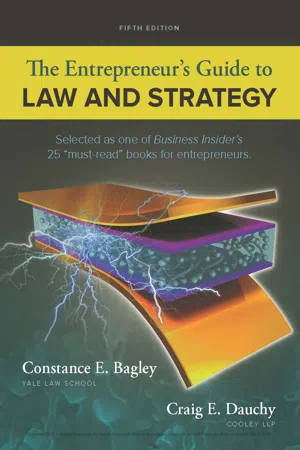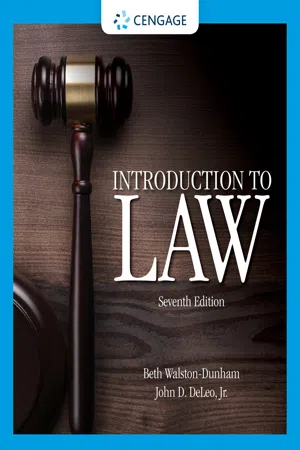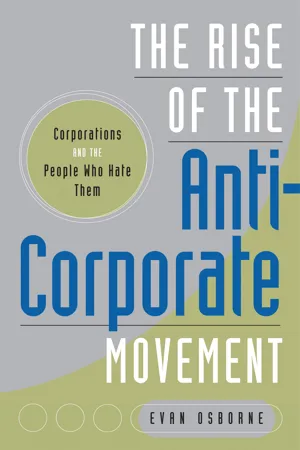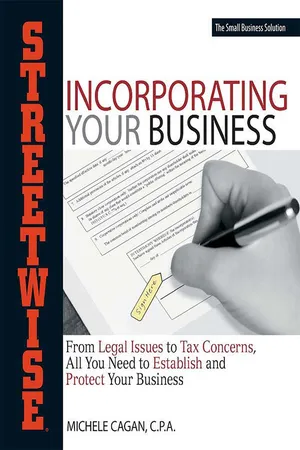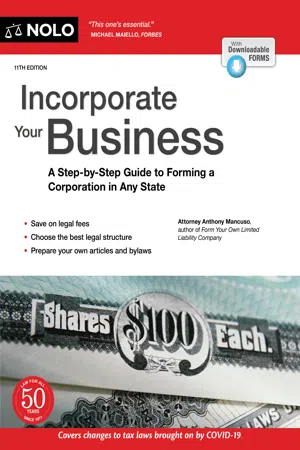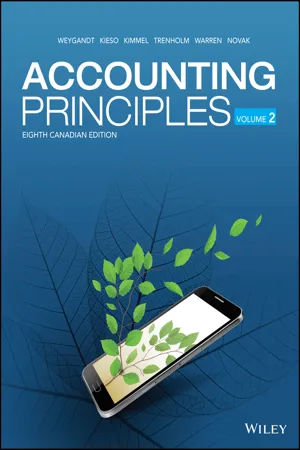Business
Corporation
A corporation is a legal entity that is separate from its owners, known as shareholders. It is formed to conduct business and has the ability to enter into contracts, own assets, and incur liabilities. Corporations provide limited liability protection to their owners, meaning that the shareholders are generally not personally responsible for the company's debts and obligations.
Written by Perlego with AI-assistance
Related key terms
1 of 5
10 Key excerpts on "Corporation"
- No longer available |Learn more
- (Author)
- 2014(Publication Date)
- College Publishing House(Publisher)
_____________WORLD TECHNOLOGIES_____________ Chapter- 6 Corporation A Corporation is a legal entity that is created under the laws of a state designed to establish the entity as a separate legal entity having its own privileges and liabilities distinct from those of its members. There are many different forms of Corporations, most of which are used to conduct business. Early Corporations were established by charter (i.e. by an ad hoc act passed by a parliament or legislature). Most jurisdictions now allow the creation of new Corporations through registration. An important (but not universal) contemporary feature of a Corporation is limited liability. If a Corporation fails, shareholders normally only stand to lose their investment and employees will lose their jobs, but neither will be further liable for debts that remain owing to the Corporation's creditors. Despite not being natural persons, Corporations are recognized by the law to have rights and responsibilities like natural persons (people). Corporations can exercise human rights against real individuals and the state, and they can themselves be responsible for human rights violations. Corporations are conceptually immortal but they can die when they are dissolved either by statutory operation, order of court, or voluntary action on the part of shareholders. Insolvency may result in a form of corporate 'death', when creditors force the liquidation and dissolution of the Corporation under court order, but it most often results in a restructuring of corporate holdings. Corporations can even be convicted of criminal offenses, such as fraud and manslaughter. Although corporate law varies in different jurisdictions, there are four core characteristics of the business Corporation: • Legal personality • Limited liability • Transferable shares • Centralized management under a board structure _____________WORLD TECHNOLOGIES_____________ History 1/8 share of the Stora Kopparberg mine, dated June 16, 1288. - eBook - PDF
- Constance E. Bagley, Craig E. Dauchy(Authors)
- 2017(Publication Date)
- Cengage Learning EMEA(Publisher)
Although the sole proprietorship is probably the most prevalent form of small business in the United States, it is often a poor choice because the owner has unlimited liability for the losses of the busi-ness, thereby putting all of the owner ’ s personal assets at risk. 4.3 CorporationS A Corporation is a distinct legal entity owned by its shareholders. It has an unlimited life and free transferability of ownership, so its existence is not affected by changes in its ownership resulting from transfers of stock by shareholders (or upon a shareholder ’ s Chapter 4 Deciding Whether to Incorporate 57 Copyright 2018 Cengage Learning. All Rights Reserved. May not be copied, scanned, or duplicated, in whole or in part. WCN 02-300 death) or the issuance of new shares by the Corporation. If an indi-vidual shareholder dies, that person ’ s shares are transferred to the shareholder ’ s heirs. Unlike a partnership, a Corporation may be owned by a single person who can be the Corporation ’ s sole director and serve as any or all of the required officers (e.g., president, treasurer, and secre-tary). The shareholders elect the Corporation ’ s board of directors but are generally otherwise not active in the management of the Corporation. Shareholder approval is required for certain major transactions, however, such as a sale of all the Corporation ’ s assets. The board of directors is responsible for appointing the officers, who serve at the pleasure of the board; setting executive compensation; authorizing the sale of stock or the issuance of stock options; approving the corporate strategy; and making other longer-term corporate decisions. Day-to-day management is car-ried out by the Corporation ’ s officers. - eBook - PDF
- Beth Walston-Dunham(Author)
- 2019(Publication Date)
- Cengage Learning EMEA(Publisher)
Although a cor -poration cannot be imprisoned, it can be fined or dissolved as a penalty for illegal conduct. In addition, the acting individual can be held criminally responsible. LIFE. Generally, the life of a Corporation goes on indefinitely as long as the require -ments of the statutes that permitted its creation are met. The statutes that set forth the ways in which a Corporation must be created usually establish annual obligations that must be met for the Corporation to continue to exist. often these obligations include such things as payment of an annual fee for continued registration with the state as a recognized Corporation and annual reports describing the activities of the Corporation during the preceding year. LIMITED LIABILITY. Perhaps the greatest advantage of a Corporation is that individ -uals who invest in it have limited exposure for losses. ordinarily, a pers on who invests in a Corporation is called a shareholder. In return for the investment, a shareholder is given shares of stock in the Corporation. The shares represent a percentage of own -ership. The greater the investment, the greater the percentage of ownership. If the Corporation does well, the shareholder’s ownership becomes more valuable in terms of the price of the shares or the distribution of profits. If the Corporation does badly or a large monetary judgment is rendered against it as the result of a lawsuit, the share -holders usually stand to lose only the amount of their original investment. 39 Thus, the Corporation differs from most other types of business entities, in which the owners are responsible for the entire judgment irrespective of whether it exceeds their investment. Corporation Entity legally recog -nized as independent of its owners, who are known as shareholders. A Corporation can sue or be sued in its own name regarding its own rights and liabilities. Alden and Chloe Jefferson worked for the same clothing store for 30 years. - eBook - PDF
The Rise of the Anti-Corporate Movement
Corporations and the People who Hate Them
- Evan Osborne(Author)
- 2007(Publication Date)
- Praeger(Publisher)
As will be seen, this is a tale that is deficient in several respects. The full development of anti-corporate thought is presented in the next chapter; this one is devoted to a brief history of the modern Corporation. 1 It is best to be clear about what the ‘‘modern Corporation’’ is. I will identify, largely in agreement with the ACM, three main characteristics. The first is share- holding—firms are owned by stockholders, who have the authority to make decisions about how to operate the company (which they may delegate to managers) and are compensated from corporate revenues in the form of dividends. A related aspect of many modern Corporations is that ownership shares are widely dispersed. Huge numbers of them are created, and they are often held in very small fractions by thousands or even millions of individuals. The second characteristic is limited liabil- ity—shareholders are responsible for corporate debts only to the extent of share ownership, and their personal property cannot be attached for judgments against the firm. The third feature, personhood, means that the Corporation possesses many of the rights that individuals do—the right to contract, most importantly. But corporate personhood departs from its literal equivalent in that the Corporation can have permanence— i.e., it may outlive those who originally create it or who compose its current governing authorities. The Corporation, in principle, can live forever. (Both personhood and limited liability may be employed without issuance of shares by Corporations as small as a single individual—an accountant or other small-business owner, for example.) The idea of dividing up initial investment capital among shareholders in exchange for shares of the profits is the most straightforward of the three features, and so unsurprisingly it is the oldest. There is nothing par- ticularly Western or modern about such arrangements; many premodern civilizations developed them. - eBook - ePub
Streetwise Incorporating Your Business
From Legal Issues to Tax Concerns, All You Need to Establish and Protect Your Business
- Michele Cagan(Author)
- 2007(Publication Date)
- Adams Media(Publisher)
Understanding CorporationsPART 2Passage contains an image
Chapter 5The People Chapter 6 The Paperwork Chapter 7 Taking Stock Chapter 8 Get to Know Securities Laws Chapter 9 All About Limited LiabilityCorporations Are “People”Legally speaking, a Corporation is a person. That corporate person has certain legal rights and responsibilities, just as real live people do. A Corporation has the right to enter into contracts, hire an attorney to represent it in court, file lawsuits, and conduct business in its own name. It also has the responsibility to pay taxes (whenever applicable), fulfill any contractual obligations, and comply with laws and regulations. Though a Corporation is considered a person under the law, it is not a “natural person,” and laws that specifically refer to natural persons do not apply to Corporations.Every state authorizes business Corporations to engage in absolutely any business activity not specifically prohibited by law. Essentially, that gives Corporations the power to do just about anything, including things like these:Open and maintain bank accountsOwn assetsIncur liabilitiesLend moneyMake charitable donationsEstablish and maintain employee retirement plansEnter into joint ventures with other businessesHire and fire employeesSo, for legal and business purposes, Corporations are people. However, they need actual people to take all of these actions and to be formed in the first place. Even though real people must be involved in order for a Corporation to operate, the people don’t have to stand in for the Corporation when it comes to legal issues. Those are strictly the problems of the Corporation itself, one of great benefits of inCorporation.Incorporators Get Things GoingIf you want your business to be set up as a Corporation, you have to incorporate it. The person responsible for doing that is called the incorporator. Basically, an incorporator signs the articles of inCorporation and then files those articles with the state. - No longer available |Learn more
Incorporate Your Business
A Step-by-Step Guide to Forming a Corporation in Any State
- Anthony Mancuso(Author)
- 2021(Publication Date)
- NOLO(Publisher)
To help you understand where a business Corporation fits in the corporate landscape, we begin by briefly describing other types of Corporations, including nonprofit, professional, and close Corporations. Then we cover the basic legal paperwork and procedures that you must undertake to form and operate a business Corporation, including the issuance of shares to your initial shareholders. This background information will help you follow the specific instructions we provide in the later chapters for preparing corporate articles, bylaws, and minutes, and making your first stock issuance. This chapter also helps you understand any corporate or securities statutes you may wish to browse in your state’s Business Corporation Act or Securities Act. Understanding and paying corporate taxes is covered in the next chapter, Chapter 3. Kinds of Corporations State law classifies and regulates different types of Corporations. This book shows you how to form a business Corporation (a few states call it a “profit Corporation”). Essentially, a business Corporation is one that engages in any lawful business that is not specially regulated under state law (such as the insurance, banking, or trust business). Before discussing the rules that apply to busi-ness Corporations—the type most readers of this book will want to form—let’s look at a few other types of Corporations that are set up and oper-ated under special state rules. You must follow unique procedures to form one of these types of Corporations, which are not covered in this book. Domestic Versus Foreign Corporations When browsing your state’s corporate statutes, you may run into the terms domestic Corporation and foreign Corporation. A domestic Corporation is one that is formed under the laws of your state by filing articles of inCorporation with the state’s corporate filing office. - eBook - PDF
- Richard Mann, Barry Roberts(Authors)
- 2019(Publication Date)
- Cengage Learning EMEA(Publisher)
Corporate actions include any action taken by or on behalf of the corpora- tion by the incorporator, the board of directors, a com- mittee of the board of directors, an officer or agent of the Corporation, or the shareholders. that the incorporators have satisfied all conditions prec- edent to inCorporation, except in a proceeding brought by the state. This applies even if the articles of inCorporation contain mistakes or omissions. With respect to the attribute of limited liability, the original Model Act (MBCA) and a few states provide that all persons who assume to act as a Corporation without authority to do so shall have joint and several unlimited liability for all debts and liabilities incurred or arising as a result of their so acting. The Revised Act, however, imposes liability only on persons who purport to act as or on behalf of a Corporation, knowing that there was no inCorporation. Consider two illustrations: First, Smith had been shown executed articles of inCorporation some months before he invested in the Corporation and became an officer and director. He was also told by the corpora- tion’s attorney that the articles had been filed; however, because of confusion in the attorney’s office, they had not in fact been filed. Under the Revised Act and many court decisions, Smith would not be held liable for the obliga- tions of the defective Corporation. Second, knowing that no Corporation has been formed because no attempt has PRACTICAL ADVICE To obtain limited liability as a shareholder in a Corporation, make sure that the Corporation has been properly organized before becoming a shareholder. FACTS On February 1, 1988, Robert L. Harris sold his business and its assets to J & R Construction. Joe Alexander, one of three J & R incorporators, signed the contract on behalf of J & R Construction with Harris. - eBook - PDF
Churchill's Horses and the Myths of American Corporations
Power, Stakeholders, and Governance
- Mord Bogie(Author)
- 1998(Publication Date)
- Praeger(Publisher)
6 These public Corporations are truly the draft horses—Churchill’s Horses—of our economy. How did they get so big? They got big by using other people’s money—their shareholders’ investment. Corporations Are Nothing More or Less Than Their People 9 Shareholders own a Corporation, but they’re not like the partners who own a partnership or the individuals who own sole proprietorships. Partners and pro- prietors have to be actively involved in their business because if it fails, they are responsible for its unpaid debts and unfulfilled obligations. Having active investors limits the size of these organizations. A partnership with thousands of partners couldn’t function any more than the U.S. House of Representatives could function if it had thousands of representatives. Corporations, on the other hand, are endowed by Corporation law with a special advantage known as limited liability. If the Corporation fails, its owners have no responsibility for its unpaid debts and unfulfilled obligations. That’s one reason for converting an unincorporated business (sole proprietorship or partnership) into what American journalist Ambrose Bierce, quoted at the be- ginning of this chapter, called an ingenious device for seeking profit without responsibility—to limit the owners’ out-of-pocket loss, if the business fails, to no more that what they have already paid to buy their shares of stock. Still, if you’re an entrepreneur, that probably isn’t your primary reason for incorporating your enterprise. You intend to succeed, not fail, and you plan to stay actively involved in running the business to make sure you do succeed, at least until you’re able to recover your investment. But the quickest way to recover your investment is to sell shares you own to members of the public. And limited liability is important to public shareholders. - eBook - PDF
- Jerry J. Weygandt, Donald E. Kieso, Paul D. Kimmel, Barbara Trenholm, Valerie Warren, Lori Novak(Authors)
- 2019(Publication Date)
- Wiley(Publisher)
Generally, a private company has the choice of following IFRS or ASPE. Characteristics of a Corporation Regardless of the purpose or ownership of a Corporation, there are many characteristics that make Corporations different from proprietorships and partnerships. The most important ones are explained below. Separate Legal Existence As an entity that is separate from its owners, the Corporation acts under its own name rather than in the name of its shareholders. A Corporation may buy, own, and sell property. It may borrow money and enter into legally binding contracts in its own name. It may also sue or be sued, and it pays income tax as a separate legal entity. Remember that, in a proprietorship or partnership, the acts of the owners bind the pro- prietorship or partnership. In contrast, the acts of shareholders (owners in a Corporation) do not bind a Corporation unless these individuals are also official agents of the Corporation. For example, if you owned shares of Aritzia Inc., you would not have the right to purchase or lease a new building in the name of the Corporation unless you were an official agent of the Corporation. ALTERNATIVE TERMINOLOGY Privately held Corporations are also referred to as closely held Corporations. LO 6 Prepare the shareholders’ equity section of the balance sheet and calculate return on equity. Statement Presentation and Analysis • Presentation of shareholders’ equity • Analysis DO IT! 13.6 Shareholders’ equity and return on equity 13-4 CHAPTER 13 Introduction to Corporations Limited Liability of Shareholders Since a Corporation is a separate legal entity, creditors have access to a Corporation’s assets only to satisfy any unpaid claims. The liability of each shareholder is limited to the amount that he or she invested in the shares of the Corporation. - Available until 31 May |Learn more
- Stephen Fishman(Author)
- 2023(Publication Date)
- NOLO(Publisher)
This chapter tells you more about setting up a Corporation, starting with the structure of a Corporation, including the roles of the key players: the incorporators, shareholders, directors, officers, and employees. Then it looks at corporate finance—how you get money into the Corporation and how you take it out. Next is a step- by-step explanation of the procedures for setting up a Corporation. Finally, we’ll examine some sound corporate business practices. The material in this chapter applies to most, but not all, new Corporations. Generally, this material will apply to you if your proposed Corporation fits the following profile: • A relatively small number of people—about 10 or fewer—will own the corporate stock. • All or most of the owners will participate directly in managing and running the business; investors who don’t directly participate will generally be limited to friends or family members. • All of the owners will live in the state in which you form your Corporation and conduct your business. Lawyers often call a small Corporation that fits this profile a “closely held Corporation.” We’ll borrow this term in its most general, nontechnical sense. Classifying your Corporation at the outset is important because if you’re a closely held corpor- ation and sell stock to only a few friends or family members, normally you’ll be exempt from all but the most routine requirements of federal and state securities laws. But if you sell stock in your Corporation to outside investors—people who won’t help run the business or aren’t closely tied to people who are— you must comply with those laws. So if you want to sell stock to a wider range of people, especially if any of them live in a different state, you’ll need to learn more about the requirements of the securities laws. Many states have generous exemptions that allow sales of stock to as many as 35 investors without complicated paperwork.
Index pages curate the most relevant extracts from our library of academic textbooks. They’ve been created using an in-house natural language model (NLM), each adding context and meaning to key research topics.

